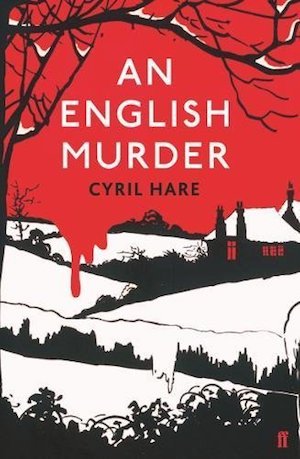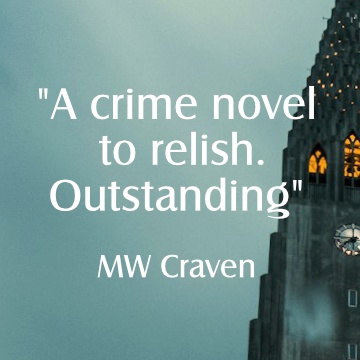 Written by Cyril Hare — Faber and Faber’s new reissue of Cyril Hare’s 1951 novel An English Murder could not be more timely as division and extremism make for fraught politics. Trump and his white supremacists versus the deep blue Democrats, Brexiters and Corbynistas, and now a classic country house murder mystery that uses lingering post-WWII fascism and a socialist movement to drive an Agatha Christie-style plot and in doing so reflects some of the contentions of our own time.
Written by Cyril Hare — Faber and Faber’s new reissue of Cyril Hare’s 1951 novel An English Murder could not be more timely as division and extremism make for fraught politics. Trump and his white supremacists versus the deep blue Democrats, Brexiters and Corbynistas, and now a classic country house murder mystery that uses lingering post-WWII fascism and a socialist movement to drive an Agatha Christie-style plot and in doing so reflects some of the contentions of our own time.
The novel opens on Christmas Eve at Warbeck Hall, a large estate in Markshire. Dr Wenceslaus Bottwink a PhD of history from Heidelberg, Germany, sits in a drafty wing working diligently on the history of Warbeck Hall via the Warbeck papers. Thanks to the new socialist government that seems to be an exaggeration of the Labour government of the early 1950s, the stately home has fallen on hard times due to taxation and faces extinction. Lord Warbeck, the existing patriarch, is in another chamber. He is bedridden and fading much like his hall. His family are heading back on a snowy evening for what will presumably be their last Christmas there.
Robert Warbeck, the son and heir of the house, travels up from London after giving a speech to rally his followers. He is the head of the League of Liberty and Justice, a fascist organisation that is dead set against the current government, and feels his politics are the answer needed to fight the current social shift. When Robert arrives at Warbeck Hall he comes bearing his ideology and with this conflict surfaces and is ratcheted up as he gets into it with each newly arriving guest.
The nephew of Lord Warbeck, Sir Julius Warbeck, arrives and his presence throws fuel on the fire. Sir Julius is the Chancellor of the Exchequer, a key figure in the current and most advanced socialist government in Western Europe. The antithetic politics of Sir Julius and Robert make the Christmas Eve dinner horribly cantankerous.
More gather and we get the full set of characters needed for a good old country house mystery. At the stroke of midnight, after a scene of excessive drinking and debate, one of the guests picks up the wrong glass and takes a big gulp. The drink is the last that guest will take as they fall dead on the floor. Suspicions arise immediately. How did this person die? Who killed them? Who will be next? Reasons exist to suspect everyone, which is what we want from this style of mystery. Hare intelligently constructs a motive for each character and the plausibility makes the guessing game fun.
After the originality of the set-up, this well-written novel eventually veers into the tropes of the Golden Age mystery. The book offers some nice twists due to the politics that are written into the plot but in the second half becomes more predictable. By about halfway through the book, it is fairly apparent where the story is headed and why the crimes occur. The ending is tightly woven, but it lacks the surprises that many of the best of the sub-genre have in them. If you are interested in the best of this era check out our feature on ten of the best Golden Age crime novels.
Cyril Hare was the pen name of Alfred Alexander Gordon Clark, an English judge born in 1900 who wrote ten novels and various short stories in his lifetime. An English Murder was his sixth novel and it’s nice that the book is back in print. Hare was a member of the famed Detection Club, a group of British mystery writers started in 1930 by GK Chesterton and others including Agatha Christie, Dorothy L Sayers and Hugh Walpole. The struggle at the heart of the book does speak to our time, or at least we can see parallels between that age and ours. There is nothing new or groundbreaking here, but it is great if you want a quick winter read.
Faber & Faber
Print/Kindle/iBook
£3.79
CFL Rating: 3 Stars









